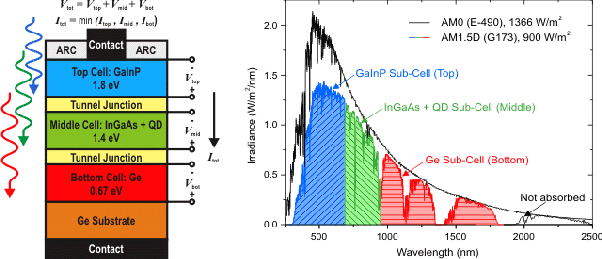svetz
Works in theory! Practice? That's something else
Rainy and cloudy outside, my 340W LGs are pulling in about 47W.
Yesterday, in another thread, I wondered if different panels types (e.g., poly or mono, high or low efficiency) get more power than others for hazy or cloudy days? I'll start off by saying, I don't know!
We know at STC two 100W panels should produce the same power regardless of their efficiency or whether they are mono or polycrystalline, or thin film.
Does Efficiency Matter?
If watts-out = watts-in/area * efficiency * area, then efficiency doesn't matter as it's a constant. That is at 80% light each would still produce the same amount of power.
It's a matter of Wavelength
But, is efficiency truly a constant? Consider that different solar panel types are all different in terms of the amount of energy they absorb from different wavelengths. Super high efficiency panels have three layers, the top layer converts energy from the highest wavelengths, the bottom layer from the lowest.

The energy converted from the various wavelengths might look like:

Humidity, air mass, cloud type and thickness will all have an effect on energy absorption, and not all wavelengths are absorbed equally. For example, clouds typically block UV and can reflect IR.
I suspect that different panels do indeed have different efficiencies for varying cloud cover, but also that it would be really hard to quantify since no two clouds are the same. Still, with raw data it might be possible to get some generalities (e.g., mono, vs poly, vs thin) or manufacturer. What do you think?
Update: Ran across this article...
Yesterday, in another thread, I wondered if different panels types (e.g., poly or mono, high or low efficiency) get more power than others for hazy or cloudy days? I'll start off by saying, I don't know!
We know at STC two 100W panels should produce the same power regardless of their efficiency or whether they are mono or polycrystalline, or thin film.
Does Efficiency Matter?
If watts-out = watts-in/area * efficiency * area, then efficiency doesn't matter as it's a constant. That is at 80% light each would still produce the same amount of power.
It's a matter of Wavelength
But, is efficiency truly a constant? Consider that different solar panel types are all different in terms of the amount of energy they absorb from different wavelengths. Super high efficiency panels have three layers, the top layer converts energy from the highest wavelengths, the bottom layer from the lowest.
The energy converted from the various wavelengths might look like:

Humidity, air mass, cloud type and thickness will all have an effect on energy absorption, and not all wavelengths are absorbed equally. For example, clouds typically block UV and can reflect IR.
I suspect that different panels do indeed have different efficiencies for varying cloud cover, but also that it would be really hard to quantify since no two clouds are the same. Still, with raw data it might be possible to get some generalities (e.g., mono, vs poly, vs thin) or manufacturer. What do you think?
Update: Ran across this article...



